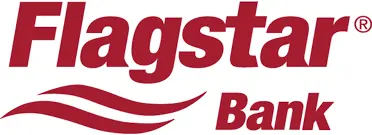2025 FHA Loan Limits in Vermont
Prospective homeowners looking for an accessible path toward owning a home in Vermont can consider FHA loans, which are mortgages backed by the Federal Housing Administration (FHA). FHA loans feature less stringent credit requirements than conventional loans and don’t require a high down payment.
It’s key to consider, though, that FHA loans come with limits by county. Homebuyers in all Vermont counties have FHA loan limits ranging from $524,225 to $575,000 for a single-family home.
Vermont FHA loan limits by county
Vermont single-family FHA loan limits
How are FHA loan limits determined?
FHA loan limits are adjusted each year, and they’re calculated based on a percentage of the national conforming loan limit as determined by the Federal Housing Finance Agency (FHFA). The calculation also incorporates the previous year’s median sales price in each county. There is a “floor,” or the lowest FHA loan limit, and a “ceiling,” the highest FHA loan limit, reserved for areas with a high cost of living.
In 2025, the FHA loan limit floor is $524,225 for a single-family home, which is 65% of the national conforming loan limit. The ceiling, which is 150% of the national conforming loan limit, is $1,209,750 — that’s the maximum FHA loan in high-cost areas. Multifamily homes with more than one unit have higher loan limits.
How to qualify for an FHA loan in Vermont
Requirements for FHA loans tend to be less strict compared to those for conventional loans. Homebuyers can borrow up to $524,225 for a single-family home in Vermont, and up to $1,008,300 for a four-unit property.
Lenders typically review the following when determining your eligibility for a loan:
- Credit score and down payment: You can qualify for an FHA loan with a credit score as low as 500, but you will need to make a down payment of at least 10%. With a credit score of at least 580, the down payment requirement drops to 3.5%.
- Primary residence: The home you purchase needs to be your primary residence for at least a year. It cannot be a vacation or rental property.
- Proof of income: Although there isn’t a specific minimum income requirement, FHA lenders will look at your employment and income history for the last two years. Lenders also look at your assets and cash reserves when reviewing your eligibility for a loan.
- Mortgage insurance: All FHA loans require homebuyers to pay mortgage insurance. There are two components: an upfront amount that’s rolled into your mortgage, and the annual mortgage insurance premium (MIP), added monthly based on a percentage of your loan.
- Debt-to-income (DTI) ratio: Your DTI ratio is the percentage of your gross income that goes towards debt obligations. Lenders typically ask that your DTI be a maximum of 43%, though you may be able to go as high as 45% if you can meet other requirements.
- FHA home appraisal: Lenders will require you to pursue a FHA home appraisal process to ensure the property is up to the FHA’s living conditions standards.
Compare mortgage rates from top lenders in minutes
Buying a multifamily property with an FHA loan
Homebuyers in Vermont can use an FHA loan to purchase a multifamily home ranging from two to four units. Purchasing homes with additional units is a popular house hacking strategy, in which the homebuyer lives in one unit and rents out the others.
Lenders may have different qualifying criteria, though most will consider these borrower requirements:
- Proof of income (potential rental income from additional units may count)
- Homebuyer must live in one unit as their primary residence for at least one year
- Minimum credit score of 580 to make a 3.5% down payment
- Maximum DTI ratio of 43% to 45%
FHA lenders in Vermont
Compare FHA Loans for Free
Read more
First-Time Homebuyer Programs: State and National Resources Updated March 31, 2025 Depending on your income, credit score and down payment amount, you may qualify for one…Read more
Vermont Mortgage Rates Updated March 21, 2024 Find VT mortgage and refinance rates to compare lenders and save on your home loan….Read more









